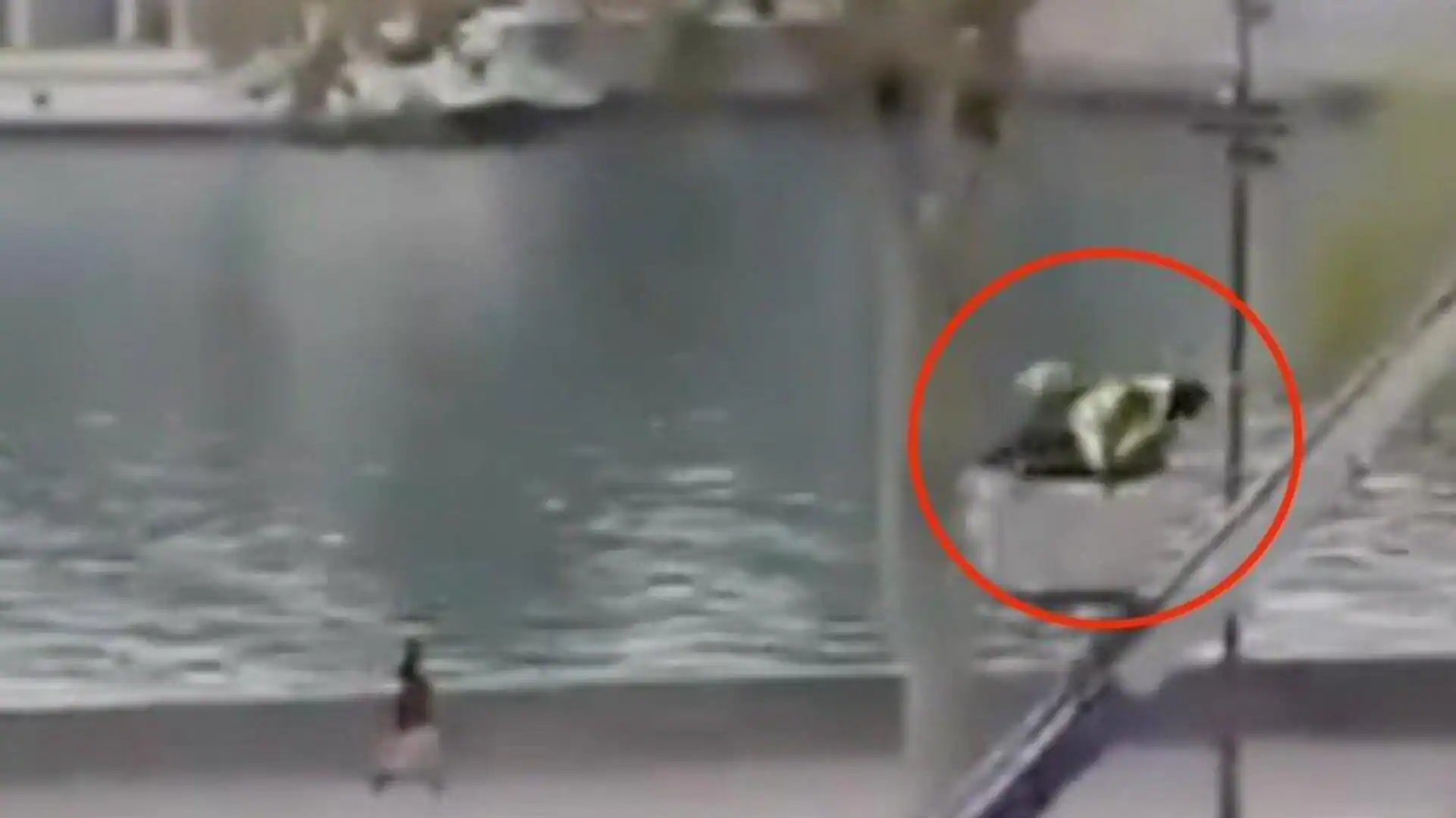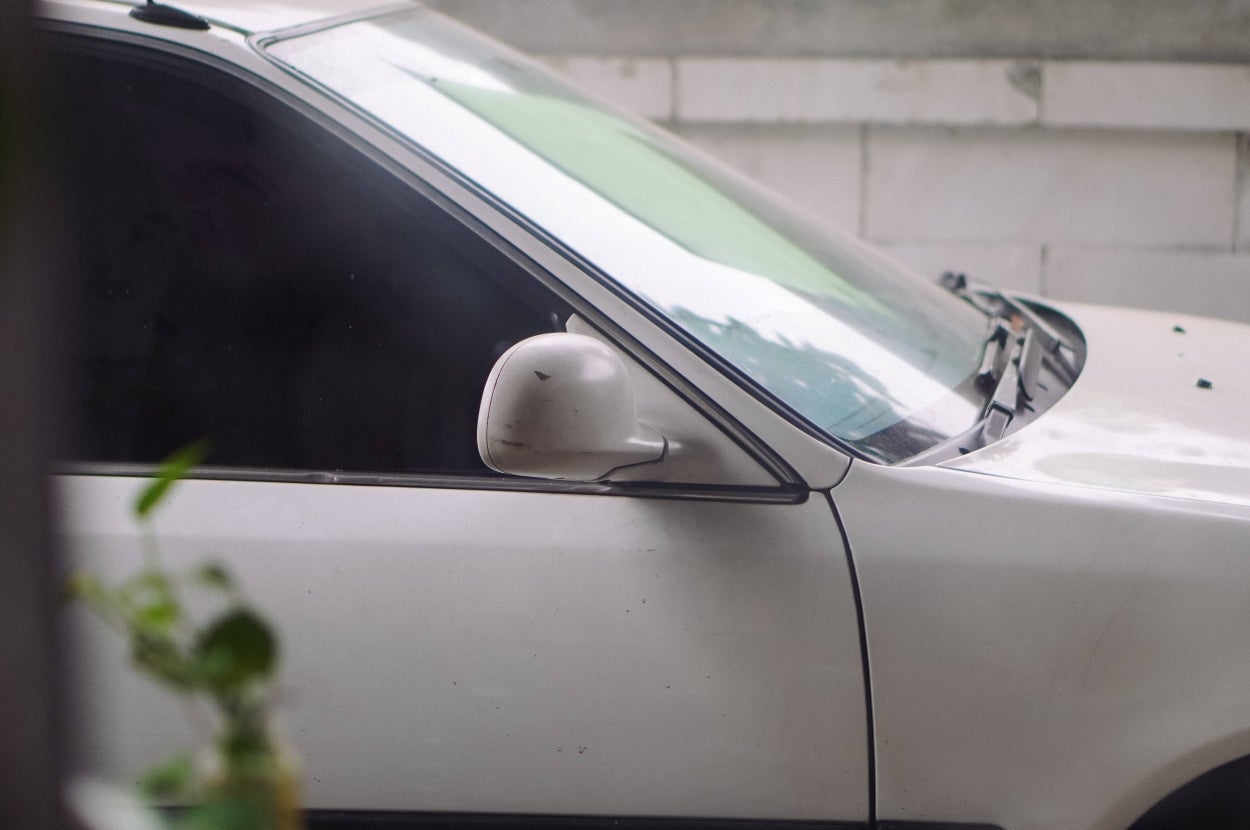Copyright breezyscroll

A newly surfaced surveillance video has shed stunning new light on the Louvre Museum’s €88 million jewel heist, capturing the robbers’ ladder-assisted escape in near real time. The 36-second clip, released by French authorities on Friday, shows two figures descending from the Paris landmark’s Apollo Gallery, one clad in a yellow safety vest, the other in a motorcycle helmet, before fleeing through the museum courtyard. Authorities now say the video is the most significant development since the October 19 theft, offering a cinematic but damning glimpse into how the world’s most visited museum became the site of one of the decade’s boldest art crimes. What the New Video Shows The footage, shot from an external security camera across the Seine, begins moments after the museum alarms sounded. The thieves can be seen clinging to a mechanical furniture lift attached to a stolen white truck that had been parked along the Rhône wing. As the lift lowers, one suspect steadies an open duffel bag while the other climbs down carrying what prosecutors believe is part of France’s royal jewelry collection, including an emerald and diamond necklace given by Napoleon I to his wife, Marie Louise. A police radio voiceover in the background of the video captures the unfolding tension: “They are going to leave. They are on scooters.” Seconds later, the camera records the pair darting from view, each on separate scooters, headed toward the Pont des Arts footbridge. The entire heist lasted just seven minutes, investigators have confirmed. For comparison, the 1911 theft of the Mona Lisa from the same museum took over an hour and involved inside help. This time, the thieves relied instead on tactical speed, construction equipment, and precision timing. How the Heist Unfolded According to reconstruction data compiled by AP and NBC, the robbers began their operation shortly after 9:30 a.m. During this hour, maintenance work had temporarily limited foot traffic near the Apollo Gallery, which holds some of the Louvre’s most valuable crown jewels. Using power tools and disk cutters, the suspects smashed two display cases containing eight historic pieces, many linked to the French Empire and the House of Bonaparte. They then exited through the same breached window on the first floor. By the time guards reached the gallery, the men dressed in black and operating calmly had already disappeared down the embankment with an estimated $102 million in jewels. A truck equipped with a telescopic lift was later found abandoned in a nearby alley, its keys still in the ignition. “It was clinically precise,” said one Paris police source. “They knew when to strike, where the cameras did not reach, and exactly how long they could stay.” A Security System Exposed The heist has triggered a national reckoning over museum safety. Louvre director Laurence des Cars admitted this week that the museum’s security network was unfit for modern risks, with “highly insufficient” external camera coverage. Internal protocols also failed: although an alarm was triggered moments after the display cases were broken, the alert reportedly never reached the museum’s emergency security hub, which prioritizes visitor incidents over artifact protection. A French Senate investigation, launched on October 22, described the lapse as “a cascade of preventable errors.” Officials revealed that only 60 percent of the Louvre’s CCTV network was operational during ongoing maintenance in the affected wing. The museum had outsourced portions of its maintenance and security oversight to third-party contractors, one of which, investigators now say, provided the same type of furniture lift used in the heist. Inside the Investigation The French Interior Ministry has assigned more than 100 investigators to the case. Forensic specialists have collected multiple DNA samples from a discarded motorcycle helmet and tactical glove near the Seine embankment. According to ABC News reports, preliminary analysis links one of the DNA traces to a suspect previously flagged in a 2019 Antwerp diamond robbery, prompting a coordinated alert through INTERPOL’s Stolen Artworks Division. The eight stolen items, formally classified as “national treasures,” have now been entered into the INTERPOL Red Notice database as part of Europe’s largest active art theft investigation. Police expect it could take months before the jewels resurface, either as re-cut gems or through private broker networks. Investigators believe at least four individuals were involved in total: two inside the museum and two outside, getaway coordinators. The team used encrypted messaging apps and may have staged diversionary signals to delay guards. Were the Jewels Insured? Perhaps most shocking: none of the stolen pieces were insured. The Louvre’s crown collections, including jewels once owned by Empress Eugénie and Queen Marie-Amélie, were considered “irreplaceable state heritage.” Under French cultural law, state-owned artifacts cannot be commercially insured. Instead, museums carry internal indemnity guarantees, which offer no financial restitution in cases of criminal theft. As one senior official told the New York Times, “When the jewels left the Louvre, the real loss wasn’t measured in euros but in national pride.” Global Repercussions for Museum Security Security experts say the Louvre robbery marks a turning point for cultural institutions worldwide. The incident will likely influence new ICOM (International Council of Museums) security standards, focusing on overnight sensor systems and structural redundancies. A criminologist from Northeastern University who studied prior art heists called this theft “the museum equivalent of a zero-day cyberattack, exploiting vulnerabilities faster than anyone realized they existed.” France’s Culture Minister Rachida Dati has already announced an emergency funding plan to modernize CCTV coverage across state-run galleries and historical sites by 2026. Similar measures are being reviewed at the British Museum and Prado Museum following a rise in high-value theft attempts. Where Could the Stolen Jewels Be Now? Experts fear the artifacts might already be lost to the shadow economy. According to Al Jazeera’s coverage, several European black-market brokers often dismantle jewelry into separate gemstones within days to erase provenance. However, heritage investigators remain cautiously hopeful. The pieces, many distinctly recognizable, are nearly impossible to resell intact without attracting media or auction scrutiny. Interpol advising agent Claire Reynaud told reporters that “art doesn’t vanish into thin air; it circulates, and circulation leaves evidence.” A Museum Haunted by Its Past This isn’t the Louvre’s first brush with theft, though none so costly in modern history. In 1911, the Mona Lisa was stolen by an Italian handyman hiding overnight in a closet, only to reemerge two years later. Ironically, that theft made the painting the world’s most famous artwork. Today’s heist, however, underscores a darker legacy: modern vulnerability in ancient walls. Paris newspapers have dubbed it “the theft of the century.” For many, the most haunting image isn’t the empty glass case; it’s the smooth, silent descent of the robbers, lit by morning sunlight, captured by a camera that should have prevented it. Why This Story Matters Beyond the shock value, the Louvre heist represents a failure of foresight. Cultural institutions increasingly face the same security paradox as banks or tech firms: the more visible and democratic they become, the more vulnerable they remain. France’s iconic museum, once invincible in the public imagination, now confronts an existential truth: protecting art in the 21st century isn’t about glass, guards, or alarms. It’s about system readiness in the face of human ingenuity. As investigators comb through DNA, timestamps, and camera data, one image remains fixed in public memory: two figures vanishing into Parisian daylight, carrying history itself.



